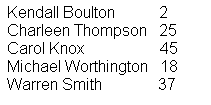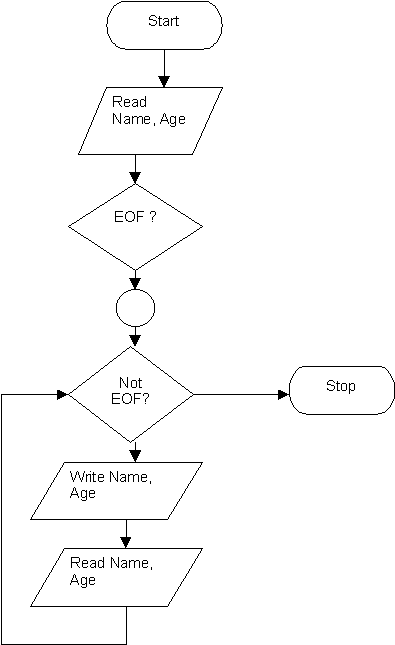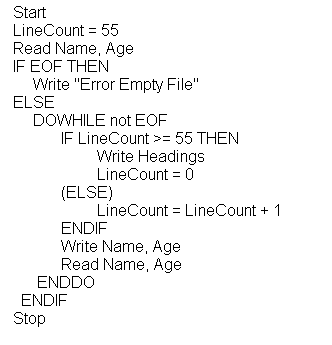NOTE: The problem below walks through an example of an automatic end of file problem that will simply read a record and print the output. This will allow you to focus on the loop and not focus on processing the problem. Walk through the steps the computer will perform using a memory diagram.Input File (Name and Age)

NOTE: Remember the automatic end of file marker is a nonprintable character. To check for the end of file marker, you use the key phrase EOF, which stands for End Of File. Computer languages that support automatic end of file recognize the key phrase EOF.
Pseudocode Example:

Flowchart Example:
Exercises:
Problem 9 – Place the processing for the totals within the nested if statement. Do not place all the processing statements after the if statement.
Problem 11 – This is a good problem to practice totals and averages.
Problem 12 – Although this problem is short, it becomes an involved problem. It includes many totals and averages. It takes the students a long time to solve this problem.
Problem 16 – Although this problem is lengthy, it is easy to solve. This is a good problem to practice nested if statements and totals. You may want to save this problem for a practice problem for the final exam.


